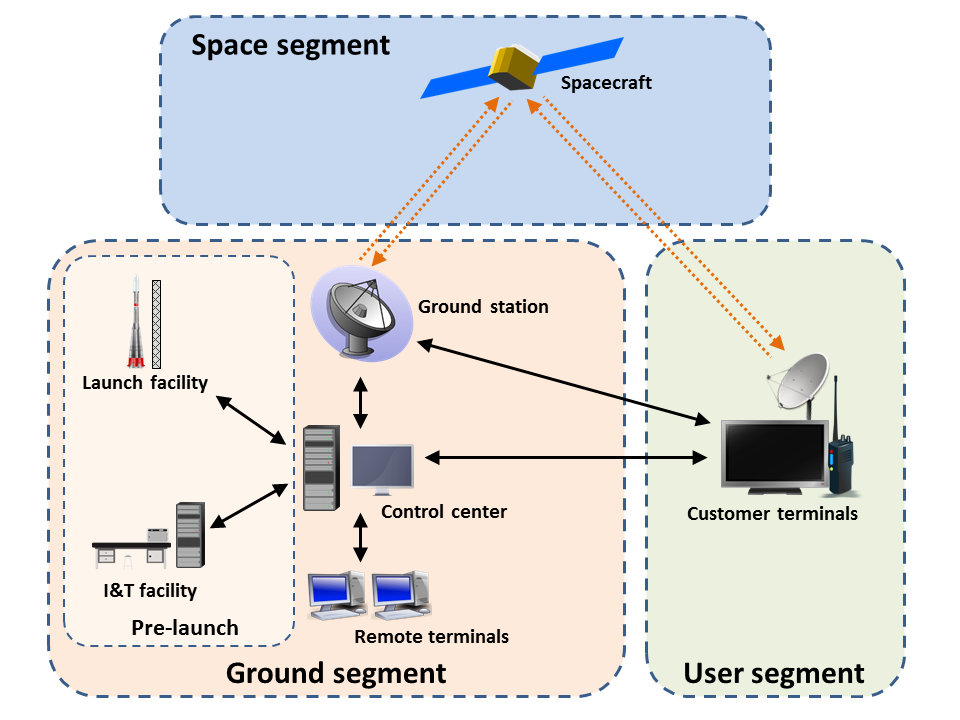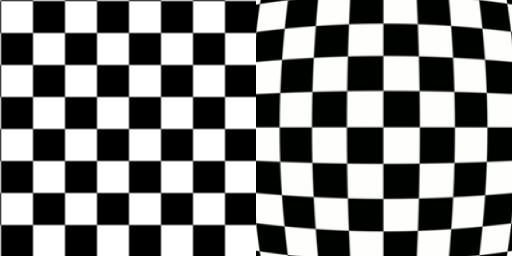|
MKF-6 (multispectral Camera)
The MKF-6 is a multispectral camera that was designed and made in East Germany for the purpose of remote sensing of the earth's surface. The device was built by the Kombinat Carl-Zeiss-Jena in cooperation with the ''Institute for Electronics'' of the Academy of Sciences of the GDR, where optical elements for the Soviet space program were developed and produced since 1969. The MKF-6 permits the combined utilization of photogrammetry and spectroscopy. It was first employed on Soyuz 22 in September 1976 and on all subsequent space flights of the USSR and Russia until the end of the space station Mir in 2001. The camera is considered to be a milestone of celestial cartography and pointed the way to the HRSC camera, which was developed by ''Jena-Optronik GmbH'', a former division of the Jenoptik Group of the Carl Zeiss AG, established in 1992 after German reunification. Because of its suitability for espionage, the MKF-6 was never sold to non-Warsaw Pact states. Technical specif ... [...More Info...] [...Related Items...] OR: [Wikipedia] [Google] [Baidu] |
Warsaw Pact
The Warsaw Pact (WP) or Treaty of Warsaw, formally the Treaty of Friendship, Cooperation and Mutual Assistance, was a collective defense treaty signed in Warsaw, Poland, between the Soviet Union and seven other Eastern Bloc socialist republics of Central and Eastern Europe in May 1955, during the Cold War. The term "Warsaw Pact" commonly refers to both the treaty itself and its resultant defensive alliance, the Warsaw Treaty Organization (WTO). The Warsaw Pact was the military complement to the Council for Mutual Economic Assistance (Comecon), the regional economic organization for the socialist states of Central and Eastern Europe. The Warsaw Pact was created in reaction to the integration of West Germany into the North Atlantic Treaty Organization (NATO)"In reaction to West Germany's NATO accession, the Soviet Union and its Eastern European client states formed the Warsaw Pact in 1955." Citation from: in 1955 as per the London and Paris Conferences of 1954.The Warsaw P ... [...More Info...] [...Related Items...] OR: [Wikipedia] [Google] [Baidu] |
Ground Segment
A ground segment consists of all the ground-based elements of a space system used by operators and support personnel, as opposed to the space segment and user segment. The ground segment enables management of a spacecraft, and distribution of payload data and telemetry among interested parties on the ground. The primary elements of a ground segment are: * Ground (or Earth) stations, which provide radio interfaces with spacecraft * Mission control (or operations) centers, from which spacecraft are managed * Remote terminals, used by support personnel * Spacecraft integration and test facilities * Launch facilities * Ground networks, which allow for communication between the other ground elements These elements are present in nearly all space missions, whether commercial, military, or scientific. They may be located together or separated geographically, and they may be operated by different parties. Some elements may support multiple spacecraft simultaneously. Elements Gr ... [...More Info...] [...Related Items...] OR: [Wikipedia] [Google] [Baidu] |
Earth Science
Earth science or geoscience includes all fields of natural science related to the planet Earth. This is a branch of science dealing with the physical, chemical, and biological complex constitutions and synergistic linkages of Earth's four spheres, namely biosphere, hydrosphere, atmosphere, and geosphere. Earth science can be considered to be a branch of planetary science, but with a much older history. Earth science encompasses four main branches of study, the lithosphere, the hydrosphere, the atmosphere, and the biosphere, each of which is further broken down into more specialized fields. There are both reductionist and holistic approaches to Earth sciences. It is also the study of Earth and its neighbors in space. Some Earth scientists use their knowledge of the planet to locate and develop energy and mineral resources. Others study the impact of human activity on Earth's environment, and design methods to protect the planet. Some use their knowledge about Earth processe ... [...More Info...] [...Related Items...] OR: [Wikipedia] [Google] [Baidu] |
Photographic Film
Photographic film is a strip or sheet of transparent film base coated on one side with a gelatin emulsion containing microscopically small light-sensitive silver halide crystals. The sizes and other characteristics of the crystals determine the sensitivity, contrast, and resolution of the film. The emulsion will gradually darken if left exposed to light, but the process is too slow and incomplete to be of any practical use. Instead, a very short exposure to the image formed by a camera lens is used to produce only a very slight chemical change, proportional to the amount of light absorbed by each crystal. This creates an invisible latent image in the emulsion, which can be chemically developed into a visible photograph. In addition to visible light, all films are sensitive to ultraviolet light, X-rays, gamma rays, and high-energy particles. Unmodified silver halide crystals are sensitive only to the blue part of the visible spectrum, producing unnatural-looking rendit ... [...More Info...] [...Related Items...] OR: [Wikipedia] [Google] [Baidu] |
Smear (optics)
In optics, smear is used to refer to motion that has low temporal frequency relative to the integration/exposure time. This typically results from a relative rate of the image with respect to the detector (e.g., caused by movement in the scene). Smear is typically differentiated from jitter, which has a higher frequency relative to the integration time. Whereas smear refers to a relatively constant rate during the integration/exposure time, jitter refers to a relatively sinusoidal motion during the integration/exposure time. The equation for the optical modulation transfer function associated with smear is the standard sinc In mathematics, physics and engineering, the sinc function, denoted by , has two forms, normalized and unnormalized.. In mathematics, the historical unnormalized sinc function is defined for by \operatornamex = \frac. Alternatively, the ... function associated with an extended sample :\mathrm_\mathrm(u) = \frac where is the spatial frequency an ... [...More Info...] [...Related Items...] OR: [Wikipedia] [Google] [Baidu] |
Exposure (photography)
In photography, exposure is the amount of light per unit of measurement, unit area (the image plane's illuminance times the exposure time) reaching a frame of photographic film or the surface of an electronic image sensor, as determined by shutter speed, lens F-number, and scene luminance. Exposure is measured in lux seconds, and can be computed from exposure value (EV) and scene luminance in a specified region. An "exposure" is a single shutter cycle. For example, a long-exposure photography, long exposure refers to a single, long shutter cycle to gather enough dim light, whereas a multiple exposure involves a series of shutter cycles, effectively layering a series of photographs in one image. The accumulated ''photometric exposure'' (''H''v) is the same so long as the total exposure time is the same. Definitions Radiant exposure Radiant exposure of a ''surface'', denoted ''H''e ("e" for "energetic", to avoid confusion with Photometry (optics), photometric quantities) and m ... [...More Info...] [...Related Items...] OR: [Wikipedia] [Google] [Baidu] |
Distortion (optics)
In geometric optics, distortion is a deviation from rectilinear projection; a projection in which straight lines in a scene remain straight in an image. It is a form of optical aberration. Radial distortion Although distortion can be irregular or follow many patterns, the most commonly encountered distortions are radially symmetric, or approximately so, arising from the symmetry of a photographic lens. These ''radial distortions'' can usually be classified as either ''barrel'' distortions or ''pincushion'' distortions. Mathematically, barrel and pincushion distortion are quadratic, meaning they increase as the ''square'' of distance from the center. In mustache distortion the quartic (degree 4) term is significant: in the center, the degree 2 barrel distortion is dominant, while at the edge the degree 4 distortion in the pincushion direction dominates. Other distortions are in principle possible – pincushion in center and barrel at the edge, or higher order ... [...More Info...] [...Related Items...] OR: [Wikipedia] [Google] [Baidu] |
Infrared
Infrared (IR), sometimes called infrared light, is electromagnetic radiation (EMR) with wavelengths longer than those of visible light. It is therefore invisible to the human eye. IR is generally understood to encompass wavelengths from around 1 millimeter (300 GHz) to the nominal red edge of the visible spectrum, around 700 nanometers (430 THz). Longer IR wavelengths (30 μm-100 μm) are sometimes included as part of the terahertz radiation range. Almost all black-body radiation from objects near room temperature is at infrared wavelengths. As a form of electromagnetic radiation, IR propagates energy and momentum, exerts radiation pressure, and has properties corresponding to both those of a wave and of a particle, the photon. It was long known that fires emit invisible heat; in 1681 the pioneering experimenter Edme Mariotte showed that glass, though transparent to sunlight, obstructed radiant heat. In 1800 the astronomer Sir William Herschel ... [...More Info...] [...Related Items...] OR: [Wikipedia] [Google] [Baidu] |
Electromagnetic Spectrum
The electromagnetic spectrum is the range of frequencies (the spectrum) of electromagnetic radiation and their respective wavelengths and photon energies. The electromagnetic spectrum covers electromagnetic waves with frequencies ranging from below one hertz to above 1025 hertz, corresponding to wavelengths from thousands of kilometers down to a fraction of the size of an atomic nucleus. This frequency range is divided into separate bands, and the electromagnetic waves within each frequency band are called by different names; beginning at the low frequency (long wavelength) end of the spectrum these are: radio waves, microwaves, infrared, visible light, ultraviolet, X-rays, and gamma rays at the high-frequency (short wavelength) end. The electromagnetic waves in each of these bands have different characteristics, such as how they are produced, how they interact with matter, and their practical applications. There is no known limit for long and short wavelengths. Extreme ... [...More Info...] [...Related Items...] OR: [Wikipedia] [Google] [Baidu] |
Shutter Speed
In photography, shutter speed or exposure time is the length of time that the film or digital sensor inside the camera is exposed to light (that is, when the camera's shutter (photography), shutter is open) when taking a photograph. The amount of light that reaches the Photographic film, film or image sensor is proportional to the exposure time. of a second will let half as much light in as . Introduction The camera's shutter speed, the lens's aperture or f-stop, and the scene's luminance together determine the amount of light that reaches the film or sensor (the exposure (photography), exposure). Exposure value (EV) is a quantity that accounts for the shutter speed and the f-number. Once the sensitivity to light of the recording surface (either film or sensor) is set in numbers expressed in "Film speed#ISO, ISOs" (ex: 200 ISO, 400 ISO), the light emitted by the scene photographed can be controlled through aperture and shutter-speed to match the film or sensor sensitivity ... [...More Info...] [...Related Items...] OR: [Wikipedia] [Google] [Baidu] |
Free Spectral Range
Free spectral range (FSR) is the spacing in optical frequency or wavelength between two successive reflected or transmitted optical intensity maxima or minima of an interferometer or diffractive optical element. The FSR is not always represented by \Delta\nu or \Delta\lambda, but instead is sometimes represented by just the letters FSR. The reason is that these different terms often refer to the bandwidth or linewidth of an emitted source respectively. In general The free spectral range (FSR) of a cavity in general is given by :\left, \Delta\lambda_\text\ = \frac\left, \left(\frac\right)^ \ or, equivalently, :\left, \Delta\nu_\text\ = \frac\left, \left(\frac\right)^\ These expressions can be derived from the resonance condition \Delta \beta L = 2\pi by expanding \Delta \beta in Taylor series. Here, \beta = k_0 n(\lambda) = \fracn(\lambda) is the wavevector of the light inside the cavity, k_0 and \lambda are the wavevector and wavelength in vacuum, n is the refractive index of ... [...More Info...] [...Related Items...] OR: [Wikipedia] [Google] [Baidu] |







